Victorian government agency VicGrid has released a long-term plan identifying six proposed renewable energy zones (REZs) and the new transmission infrastructure needed to meet the state’s renewable energy generation targets.
The 2025 Victorian Transmission Plan (VTP) outlines the investment and development needed for the state to achieve its goal to reach its renewable energy targets, including 65% generation by 2030 and 95% by 2035.
The plan proposes developing coordinated REZs in the Central Highlands, Central North, Gippsland, the North West, the South West and the Western areas of Victoria. The VTP also includes plans for a shoreline REZ in the Gippsland region designed specifically to locate infrastructure such as underground cables that will connect offshore wind farms to the grid.
The proposed REZs encompass about 1.88 million hectares, or 7.9% of Victoria’s land area, up about 200,000 hectares on the area identified in the draft proposal published earlier this year.
VicGrid said the locations for the proposed REZs had been carefully considered to minimise negative environmental and community impacts, reduce costs, and give industry the certainty it needs to invest and deliver more renewables into the grid.
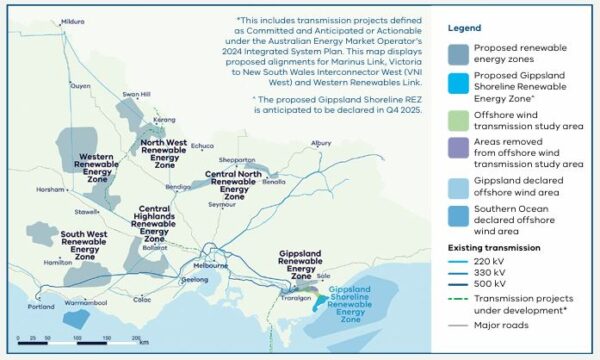
Image: VicGrid
By 2040, Victoria is hoping to add capacity of between 2.3 GW and 8,9 GW of new utility-scale solar, between 5.7 GW and 9.6 GW of new offshore wind, 9 GW or new onshore wind, and between 4.8 GW and 7.7 GW of new utility-scale energy storage capacity.
“The design process for the proposed renewable energy zones considered economic costs, land use, community preferences, regional development opportunities, generator interest, existing levels of development, wind and solar resource potential and community and industry feedback,” VicGrid said.
“The location of proposed renewable energy zones also takes into account access to transmission infrastructure, including the new transmission capacity that will be unlocked by the proposed programs of transmission upgrades set out in this plan.”
The VTP has identified the need for four new transmission lines in addition to projects already underway. The new projects include a second line from southwest Victoria to Melbourne, an additional line between Yallourn and Hazelwood, a short line between Truganina and Deer Park in Melbourne, and an additional line to support future offshore wind energy in Gippsland.
VicGrid said it is working to ensure new transmission is built in the right places and at the right time to reduce the total amount of new transmission needed.
“We have prioritised upgrades to existing transmission lines wherever possible to minimise impacts on landholders and communities and to limit cost impacts on consumer power bills,” it said.
The cost estimate of the transmission infrastructure needed to connect the new REZs has almost doubled from $4.3 billion in the initial draft to $7.9 billion for the latest edition of the plan.
According to VicGrid, the costs have been revised to reflect updated inputs and have now been benchmarked against the Australian Energy Market Operator’s recently released transmission cost database.
“The transmission infrastructure market is dynamic and has experienced sharp increases in costs in recent times,” VicGrid said, highlighting “rising raw materials, labour and contracting costs, supply chain constraints and market capacity pressures.”
The release of the VTP comes as Victoria Energy Minister Lily D’Ambrosio announced more than 42% of the state’s electricity was produced by renewables in the past financial year, putting it well on track to meet its legislated renewable energy target of 40% by the end of the year.
“As coal-fired power stations close and we move further toward a future powered by renewables, we need to support this transformational change with a plan that balances the long-term interests of all Victorians,” she said.
“The VTP is the cornerstone of a new approach, one that reflects not just engineering and economics, but also the values and voices of communities who host our energy infrastructure.”
D’Ambrosio said Victoria now hosts more than 90 large-scale renewable energy projects with a combined capacity of almost 7 GW, and there is more than 50 GW of proposed or committed renewable energy projects in Victoria.
“This shows strong investment interest in the state and a pipeline of projects ready replace the old coal-fired generators,” she said.
This content is protected by copyright and may not be reused. If you want to cooperate with us and would like to reuse some of our content, please contact: editors@pv-magazine.com.
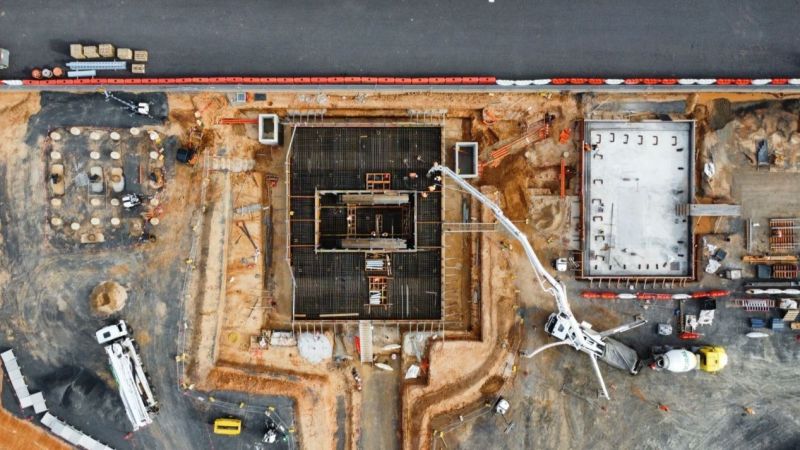

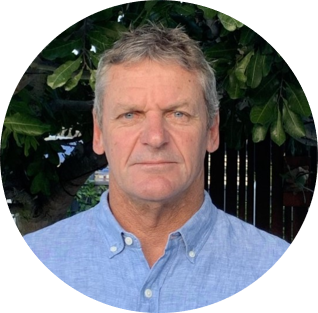


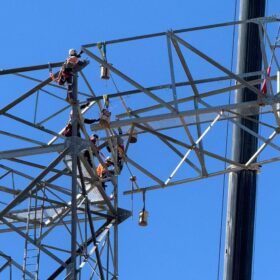
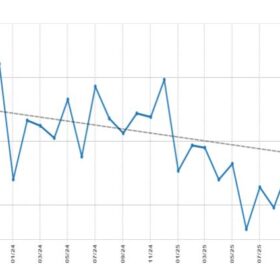

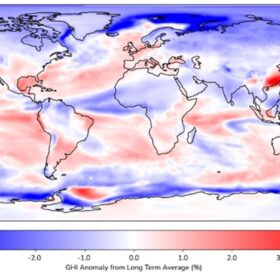
By submitting this form you agree to pv magazine using your data for the purposes of publishing your comment.
Your personal data will only be disclosed or otherwise transmitted to third parties for the purposes of spam filtering or if this is necessary for technical maintenance of the website. Any other transfer to third parties will not take place unless this is justified on the basis of applicable data protection regulations or if pv magazine is legally obliged to do so.
You may revoke this consent at any time with effect for the future, in which case your personal data will be deleted immediately. Otherwise, your data will be deleted if pv magazine has processed your request or the purpose of data storage is fulfilled.
Further information on data privacy can be found in our Data Protection Policy.